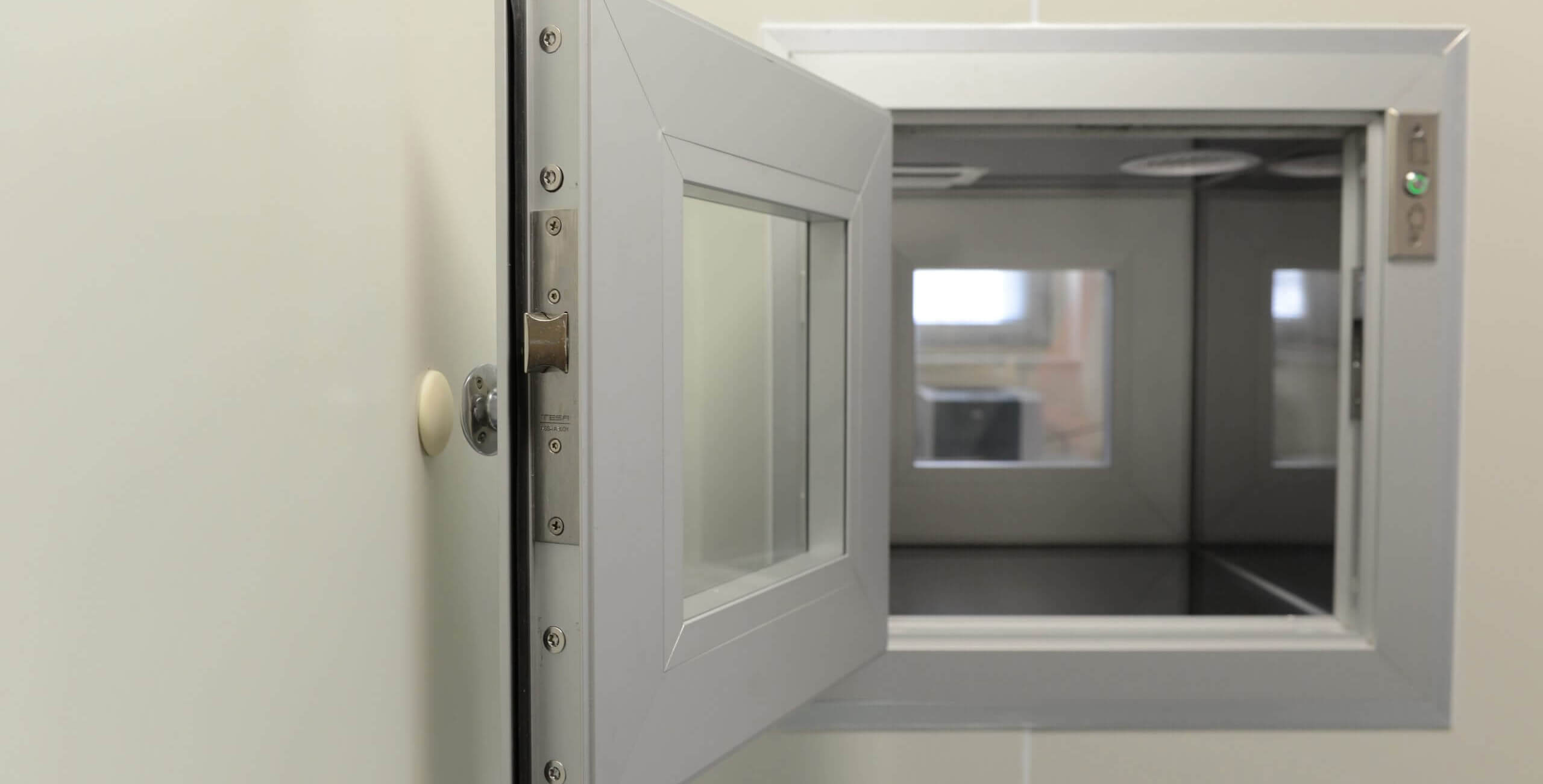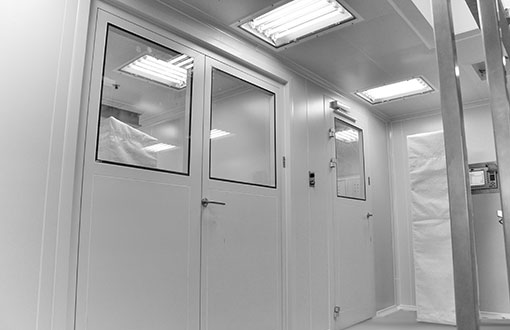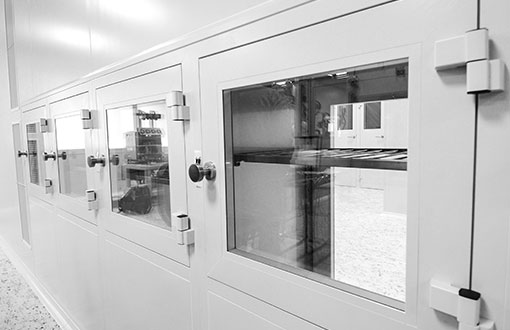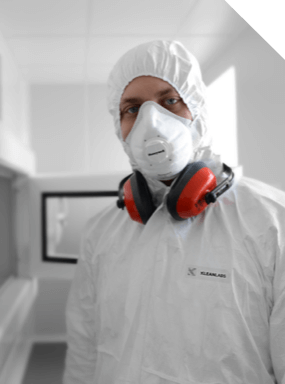Keeping the integrity of a clean room does not only consist of air filtration and not engaging in highly contaminating activities, but it also encompasses minimizing the risk of cross-contamination between clean zones of different classes as much as possible. Material transfer may also serve as a source of contamination, therefore, it deserves special attention while designing workflows in clean environments.
In this article, we’ll discuss the risk microbiological contaminants impose on clean environments and specify the most frequently used best practices to mitigate them - including, equipping pass boxes with UV lights.
What are microbiological contaminants?
According to ISO classifications, contamination may be physical or microbiological - the standard does not distinguish between the two. However, differentiating between viable and non-viable particles is of key importance when it comes to industries that require sterile manufacturing practices such as pharmaceutics.
Microorganism
Microorganisms are present everywhere from the soil, through water, to human skin, and hair. Some microorganisms live under quite harsh conditions - such as hot springs - so they have had to become resilient To be able to survive in harsh habitats, certain species of microorganisms must be resilient in different ways and be able to spread quickly.
Microorganism can spread either
- directly - by touching a sterile surface with a contaminated object,
or
- indirectly - by transportation on non-viable particles.
Common sources of microorganisms in clean rooms
- Yeasts usually derive from foods or humans. Poor manufacturing, material transfer, lack of disinfection or improper gowning can all be a source of yeast contamination.
- Molds are generally found in humid places such as wet drywall, the HVAC system or wooden pallets.
Non-viable vs viable particles
Microorganisms often don’t just float around on their own, but use other particles for transportation. These particles can be found in the air, enabling these microorganisms to spread quickly.
Non-viable particles refer to particles that do not contain living microorganisms, but may serve as transportation for them.
Viable particles refer to living microorganisms between ~0.2µm and ~30µm in size such as different bacteria, viruses and fungi that can compromise the sterility of a clean environment. Viable particles need other particles to spread. Since they are generally smaller than, for instance, dust particles, they use other airborne particles to travel from one place to another by simply sticking to them.
Consequently, if there are very few particles in the air that they can travel on, they won’t be able to spread as much. This is why air filtration also plays a key role beside disinfection in sterile environments.
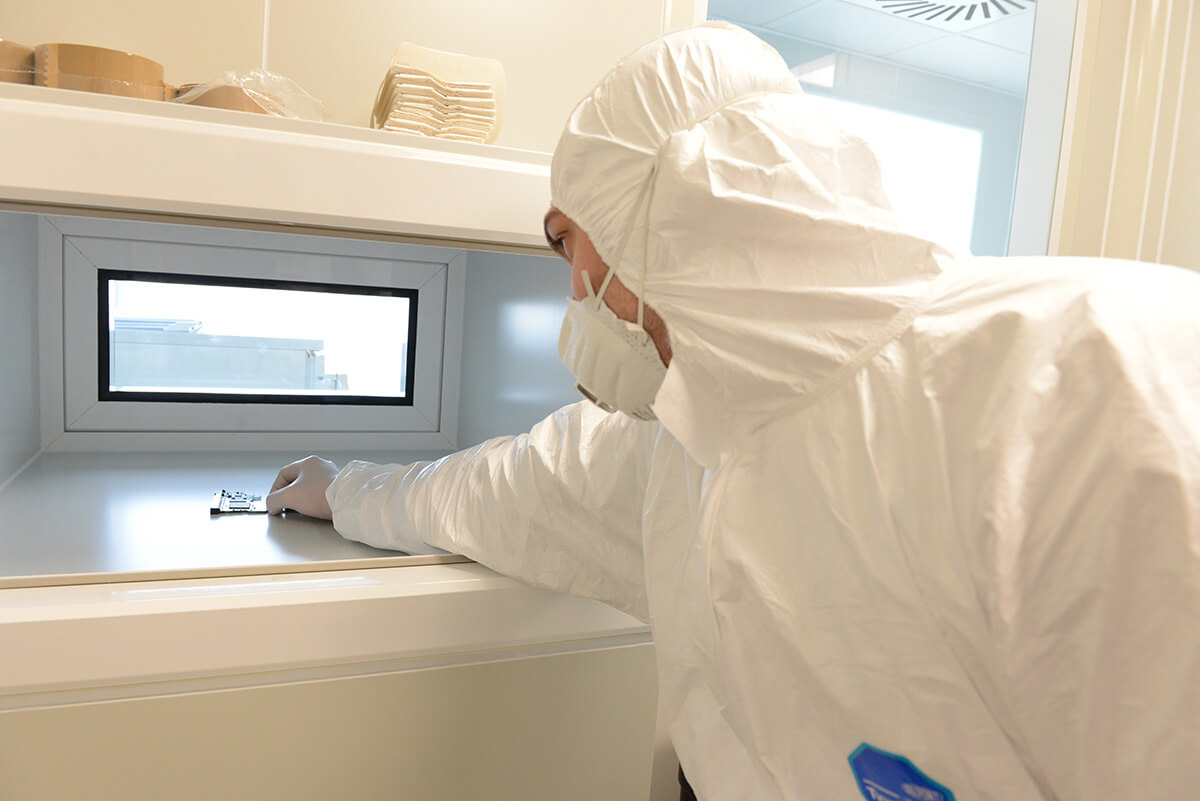
Safe ways of material transfer to avoid cross-contamination
Chemical disinfection
Chemical disinfection is carried out before items are transferred into a clean and sterile environment. All areas of the item must be disinfected, which usually refers to spraying or wiping the object.
The multiple bag method
The multiple bag method requires the item to be packaged in as many layers as many times it crosses different zones. On crossing each zone, each time an outer layer of the packaging is removed. At least one packaging layer must remain when it arrives in the Grade A area where it is sterilized.
Sterilization with direct transfer
Sterilization with direct transfer is undoubtedly the most efficient and most common method, relying on a two-sided sterilization device like a clean room pass box, autoclave, dry heat ovens, washers or devices using vaporized hydrogen peroxide and ozone . After loading the items into the box, they’re disinfected before they can be unloaded into a clean zone of a different class.
How do clean room pass boxes ensure safe material transfer between clean zones?
Clean room pass boxes create hermetically sealed spaces to ensure safe and hygienic flow of material in and out of clean rooms. We distinguish among static, semi-active and dynamic pass boxes depending on whether the device is equipped with its own ventilation system or not. Pass boxes rely on creating overpressure within the box to ‘rinse’ contaminants off the items in the box.
Semi-active and dynamic models are equipped with HEPA filters, following the principles used in general clean room construction. Consequently, the air handling system of the box does not differentiate between viable and non-viable particles, only filters particles above a certain size. This is why certain applications require special measures to assure sterility of the items. One of the most frequently used methods to sterilize items in pass boxes is to disinfect them with UV light by installing germicidal and antibacterial UV lamps into the device.
How does UV light help fight contamination?
What is UV light?
UV light can be found naturally in the sun’s rays, although it is invisible to the human eye. It is part of the electromagnetic spectrum, located right between X-rays and visible light. Based on wavelength we differentiate UVA, UVB and UVC light.
Germicidal action peaks at 265 nm, which makes UVC light in the 100-280 range most suitable for disinfection.
UVC radiation has been used for disinfection in the air, water and on various surfaces for close to half a century across various industries from water treatment to clean rooms. Most bacteria and viruses respond to UVC light.
How does UVC disinfection work?
Protons of UVC light are incredibly energetic. If the short-waves of ultraviolet radiation hit the RNA or DNA of microorganisms, they cause significant damage in them, undermining their ability to replicate. If microorganisms such as viruses, bacteria and fungal spores cannot replicate, they will stop spreading.
However, we must recognize the fact that the resistance of microorganisms to UV light varies considerably and their environment may also affect the radiation dose needed for successful disinfection.
Is UVC light harmful?
UVC light can lead to skin burn and eye injuries for humans, therefore, direct exposure should be avoided. If a UVC lamp is damaged or doesn’t work properly, always contact the manufacturer, distributor or installation expert.
Testing the efficiency of UV lights in pass boxes
In order to assure proper functioning, UV lamps in pass boxes must undergo a so-called microbiological challenge. During the test real-life operative conditions are simulated usually using Bacillus subtilis. The culture medium is placed into petri dishes that will be exposed to radiation under the UV lamp for a predetermined amount of time.
If the organisms on the plates show response to the UV light, UV lamps are validated and qualified to guarantee safe material transfer.

